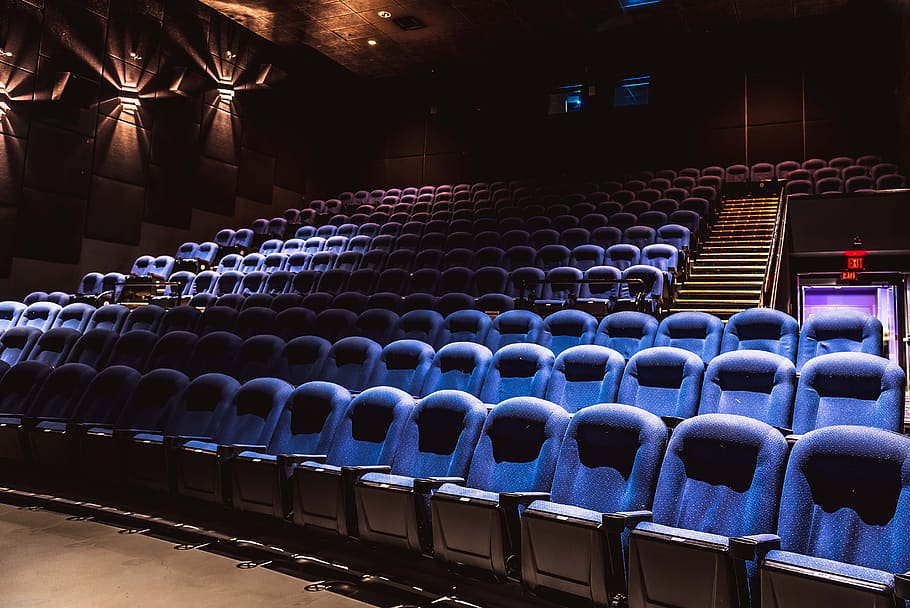
This blog has been on hiatus for a while. I got busy with work obligations, and then COVID-19 happened. You’d think that staying at home would have given me more time to write about figure skating, but I’m one of the people whose work load actually increased during the pandemic, and also there was no figure skating to write about. I mean, a few things have happened, but I’m so strongly in favor of keeping international sports closed until it’s safe that I haven’t wanted to write about sports.
I have been watching movies, though. My friend Elena and I have been doing weekly watch-alongs since the first weekend of the stay-at-home order, back in March. We’ve taken weeks off here and there for family events, but we reached 19 movies by Labor Day. It’s been fun. It almost feels like we’ve been hanging out for real. Almost. Not really.
I’ve watched other movies and TV, of course, that I’m not covering. I loved The Farewell, despised Ad Astra, and dutifully appreciated Parasite without getting into it. I’ve binge-watched some excellent TV series, like Mrs. America and Doom Patrol; some delicious garbage, like Roswell, New Mexico and Good Trouble; and some things I enjoyed but had problems with, like The Umbrella Academy and The Politician. My fiancée and I (did I mention I got engaged? I’m engaged!) have been slowly making our way through a Star Trek: Deep Space Nine rewatch. I’ve live streamed drag shows and theatrical performances. Being home all the time means the screens are on a lot. Maybe I’ll post here about some of the other stuff later.
Here’s the list, in order of how much I enjoyed them, from worst to best. I’ve also included Elena’s rankings, which she sent me without having seen mine.
19. Blinded by the Light (Elena’s ranking: 18)
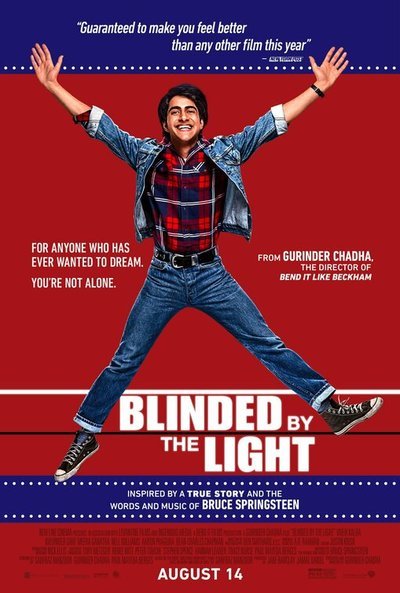
This was the only movie we watched together that made me wish I could have my afternoon back. It’s an autobiographical story of the child of South Asian immigrants growing up in working-class England in the 1980s, and I felt like I’d seen a lot of more interesting versions of this story before. The protagonist is self-absorbed, and the dialogue is stilted. Maybe it would have been better if it were about the protagonist’s sister? Maybe I would have liked it if I were more into Springsteen? Regardless, the high school coming-of-age narrative is a well-worn road, and this one stopped at every cliche.
18. Solo: A Star Wars Story (Elena: 19)
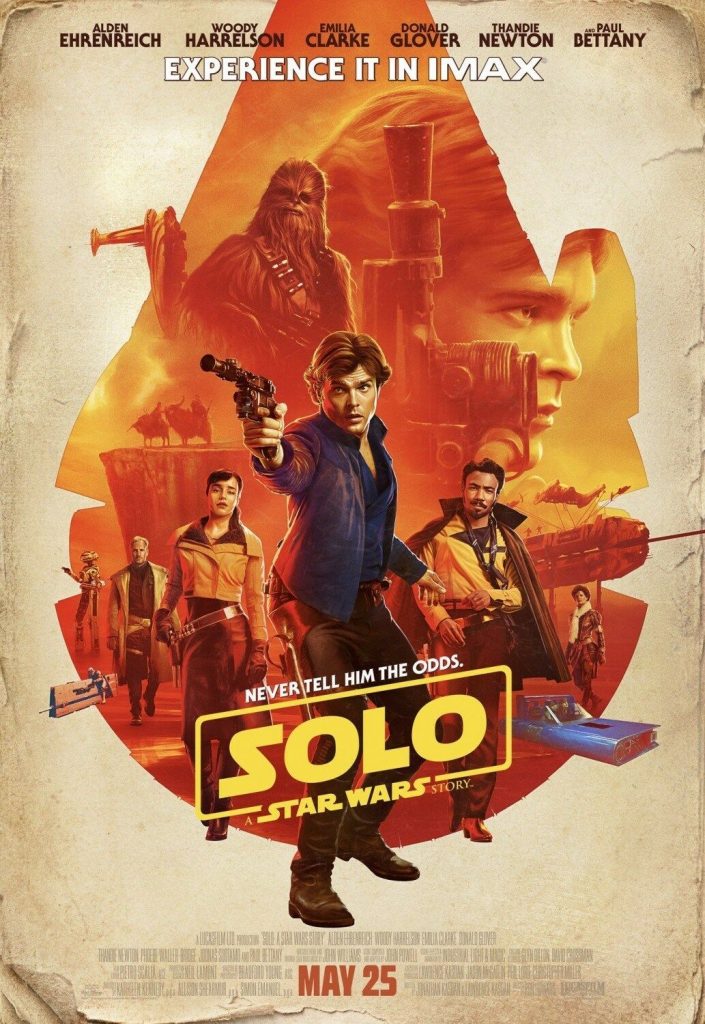
This was the first movie of our weekly watch-along experiment, and I’m relieved that we didn’t give up after it. It’s the kind of movie we would have seen together in a theater, probably the one that serves the tasty Jack Daniels lemonades, and would have enjoyed more in that environment. At home, it sags and drags. Alden Ehrenreich doesn’t have the charisma for Han Solo. All the characters we cared about seemed to die halfway through, except for Lando Calrissian. This should have been Lando: A Star Wars Story, and half an hour shorter.
17. The Old Guard (Elena: 13)
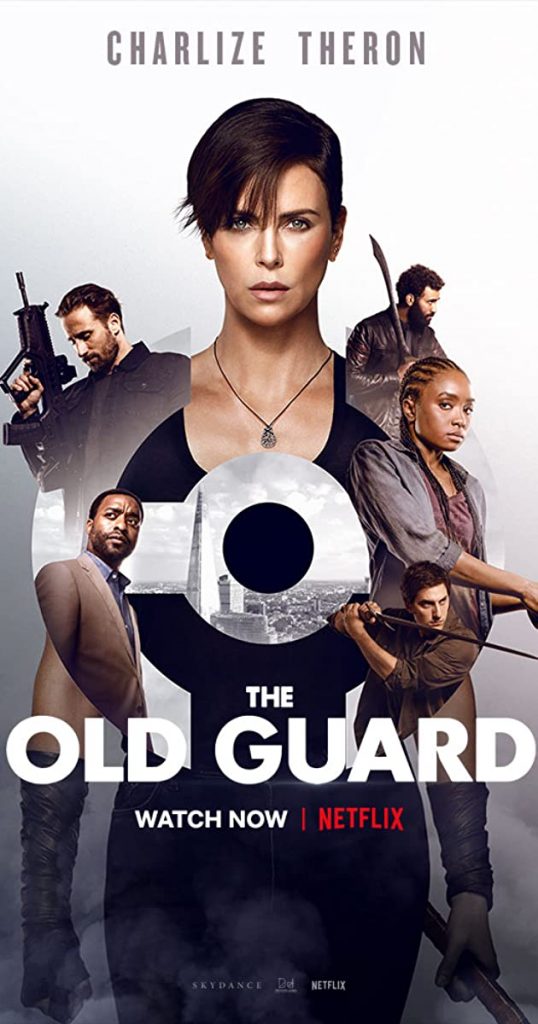
The internet was losing its collective mind over this Netflix action flick, or at least the part of the internet where Elena and I hang out, which likes genre films with Charlize Theron and epic gay romance. This was entertaining but slight, with truck-sized plot holes and violence that didn’t always feel earned. Several intriguing backstory elements arose and then went nowhere. This would have made a great eight-episode Netflix series, because it had way too many ideas for a two-hour feature. The epic gay romance scene destroyed me, though.
16. Cloudburst (Elena: 10)
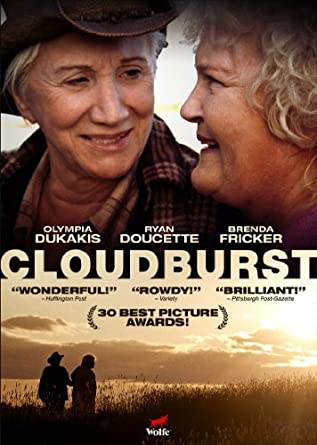
From here on out, it’s all movies I liked. Cloudburst hooked us with its premise – a cranky old lesbian breaks her lifelong partner out of a nursing home, and they go on the lam to Canada. Brenda Fricker is subtle and sweet, while Olympia Dukakis chews the stunning Maritimes scenery with gusto. It all feels a little thrown together, though, more a series of set pieces than a coherent story, and the ending is way too abrupt of a tonal shift. Still, in a summer full of cute queer movies, this might have been the cutest. That’s probably why Elena, who is an even bigger sucker for cute queer movies than I am, liked it significantly more than I did.
15. A Beautiful Day in the Neighborhood (Elena: 16)
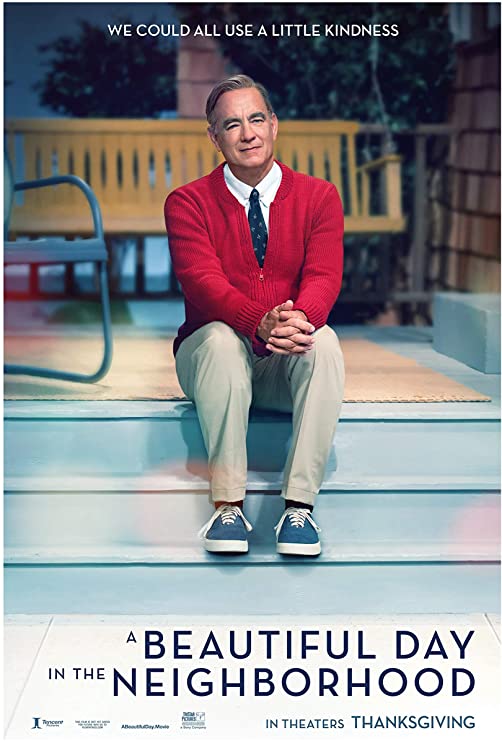
This was half of a really good movie – the half that featured Tom Hanks. Among living actors, Hanks is the one with a place in our cultural consciousness most like that of Fred Rogers. As Hanks-ness has become a brand, we’ve forgotten that Hanks is a great and versatile actor, not just a guy who plays Tom Hanks roles in Tom Hanks movies. This film is an adept recalibration, because Hanks embodies Mr. Rogers like Rogers’ spirit has possessed his body, and he’s just around to capture it on film. Unfortunately, this is not a biopic of Fred Rogers, but a heavily fictionalized tale of a straight white man with straight white man problems who learns to love because he meets Mr. Rogers. Regardless of casting, I would not have cared about these straight white man problems, but this movie taught me that I have disliked Matthew Rhys in every role I have seen him in. Even if you like Rhys more than I do – and you probably do, because it’s not hard – he’s too small for this film, a distraction from a great performance that is the only thing anyone already remembers about this movie.
14. Weekend (Elena: 11)
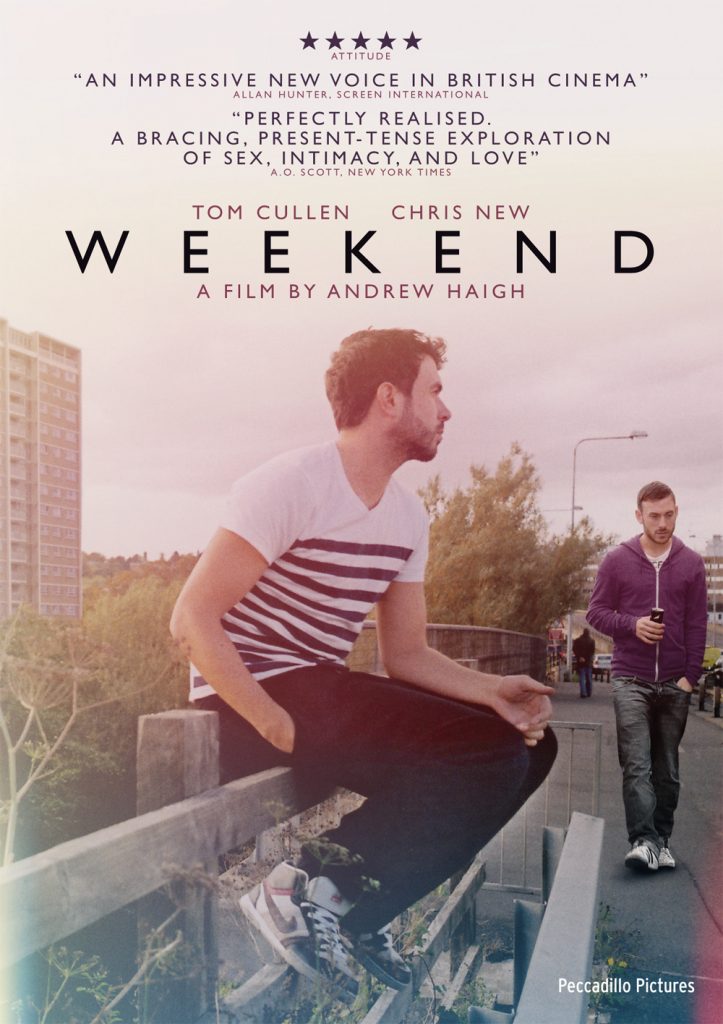
This movie is less than ten years old and already feels dated. When it came out, I read reviews that praised it for its daring sexiness and for the way it inhabits a queer world like few films did at the time. Now, at a period in history where life generally feels less stable and safe than it did in 2011, this film’s quaintness reassured me that humanity’s arc does, at least sometimes, bend toward justice and freedom. The film itself is talky and meandering, and it centers around two characters with whom it takes a long time to fall in love. It is, however, as smoking hot as advertised, and it sends a rare and satisfying message about how relationships can be successful even when they are brief.
13. The Thing About Harry (Elena: 12)
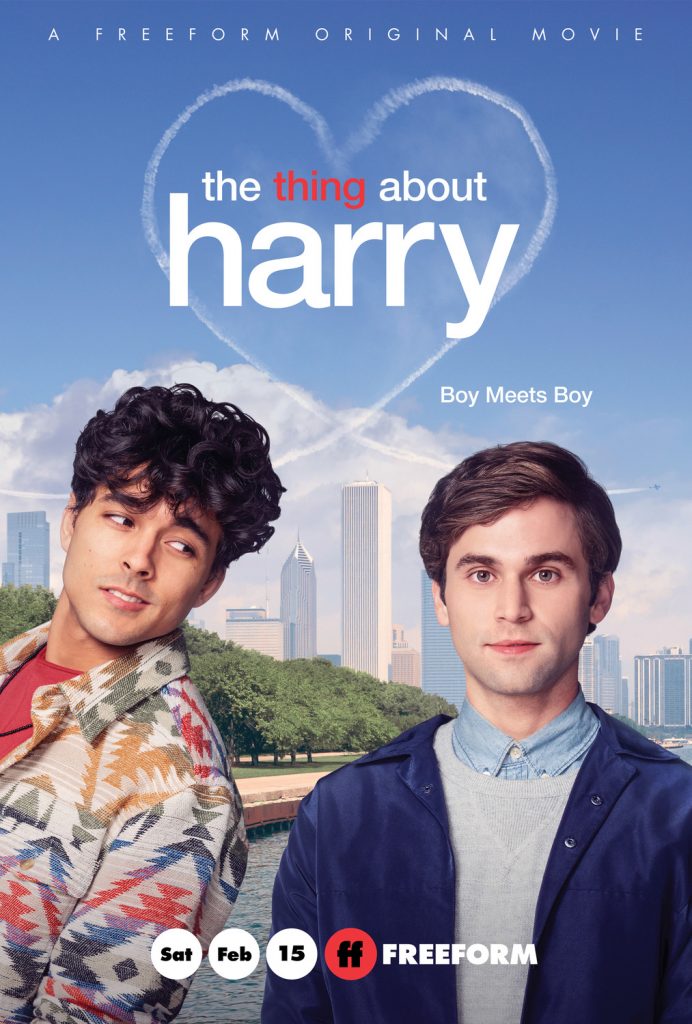
Up until the last five minutes, this is an adorable queer opposites-attract rom-com. It’s a young Millennial update of When Harry Met Sally in the same way that Clueless is a retelling of Jane Austen, with pleasing nods to the film that inspired it. Sam, the uptight gay half of the non-couple, is ostensibly the lead character, but his freewheeling pansexual counterpart, the titular Harry, steals much of his limelight. That’s largely thanks to Niko Terho, who is a perfect combination of sensitive and hunky, and therefore deserves a long career starring in direct-to-streaming comfort movies. Unfortunately, an awkward and improbable ending made both of us cringe and slid an otherwise delightful film way down the rankings.
12. Papi Chulo (Elena: 15)
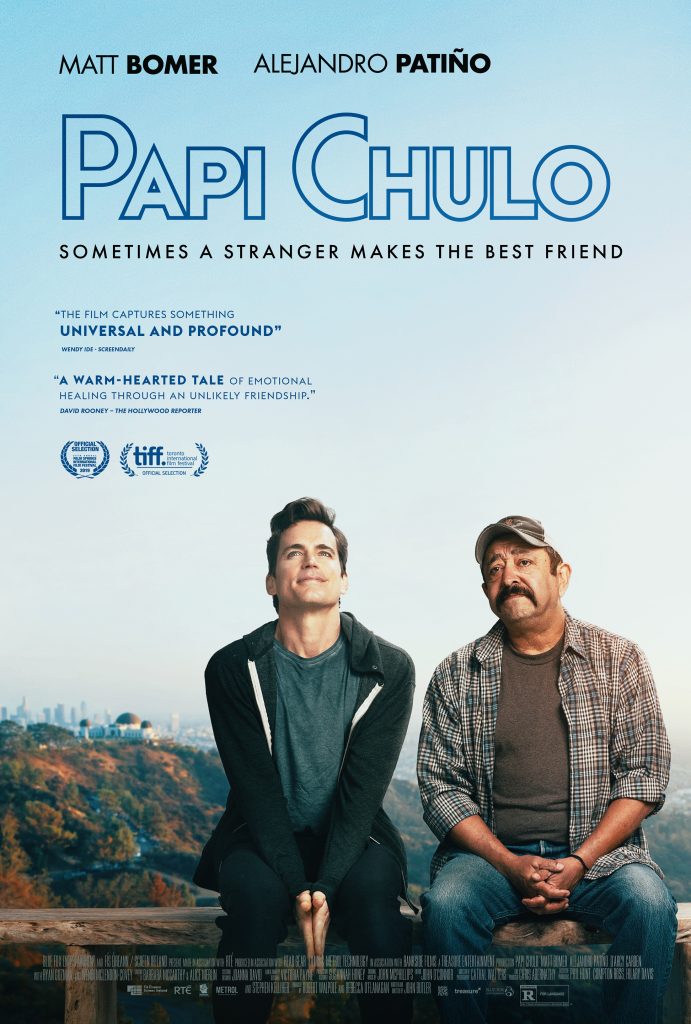
This is a tough one, because as a film and especially as a pair of lead performances, Papi Chulo is one of the most accomplished things I’ve watched during our pandemic film festival. The problem is, I’m ranking movies on how much I enjoyed them, and Papi Chulo is incredibly hard to watch. The initial premise is of an affluent white guy, coping with the end of a relationship, who bonds with the Mexican day laborer who he hires outside of the hardware store. But as the context is gradually revealed, the discomfort and anguish deepen, until it’s almost too painful to watch. Often, moments that seem like they’re meant to be cringe humor turn out to be intentionally not funny, which is a clever move, although the best moments are often the straight-up funny ones, especially Ernesto’s calls home to his wife. The actor who plays Ernesto, Alejandro Patiño, almost walks away with this movie; he’s a veteran That Guy, and this role made me angry that an actor who looks like him has such a hard time becoming a star. But Matt Bomer, who remains way too pretty to be this talented, does Oscar-caliber work here, with nuance that reminds me there is something special about a gay actor inhabiting a gay role.
11. Gewoon Vrienden (Just Friends) (Elena: 4)
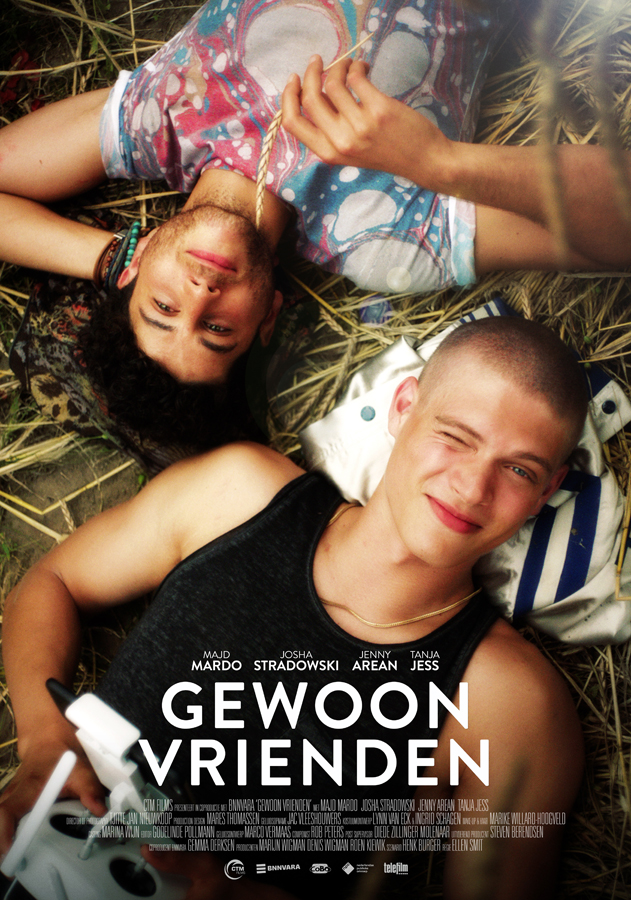
Just how many queer romances did Elena and I watch this summer, you ask? How many can there possibly be? I have lost count, but we have a to-watch list that we have barely scratched the surface of. I’m not sure how this charming, slight Dutch made-for-TV movie rose to the top, but I’m glad it did: I can’t imagine I would have seen it, or even known about it, if I weren’t holed up in my apartment trying not to catch the sickness. This is not only a queer romance but a sassy grandma movie, and therefore made for a pleasant summer afternoon of wine and texting. There’s not much of a plot beyond a couple of sweet-natured boys with quirky families getting together, which is probably why it’s one of Elena’s favorites but in the middle for me. She just wants the protagonists to fall in love and be happy; I wish this had a little more meat on its bones.
10. A Secret Love (Elena: 14)
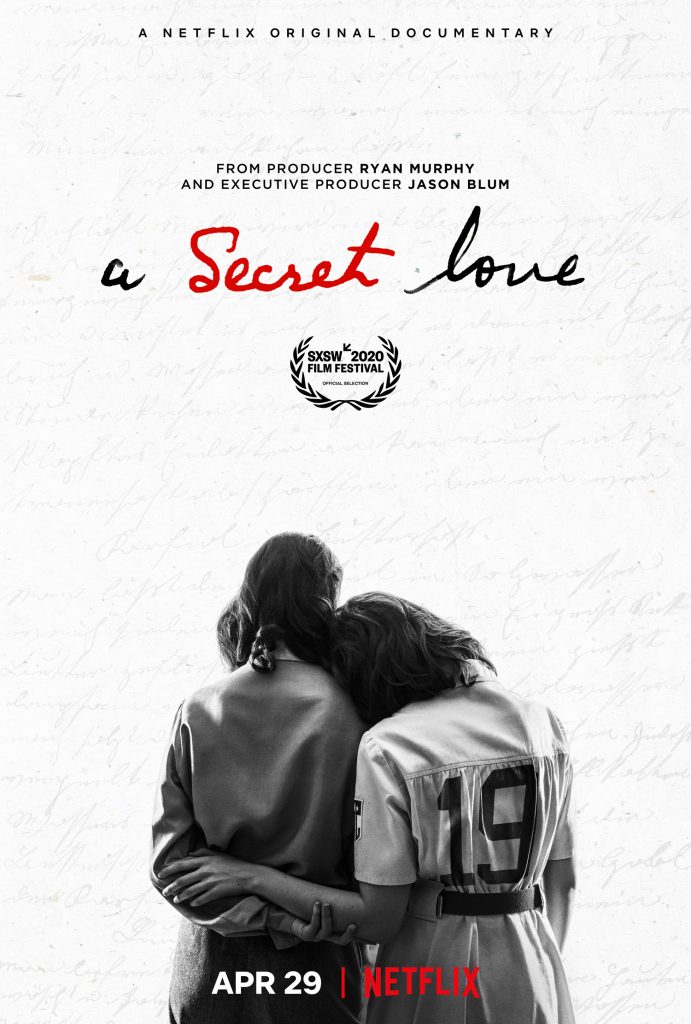
Our only documentary so far, probably because I have a higher tolerance for them than Elena does. The film cuts back and forth between past and present, narrating a love story between two women that spanned 70 years and also showing their struggles to provide for their health care and safety in their old age. It’s slow and sweet, as documentaries of this sort usually are, albeit spiced up by Pat, the certified Sassy Grandma of the couple. We might have progressed past the point where pre-Stonewall LGBTQIA+ history is a surprise, but films like this are still crucial in showing why visibility and advocacy are important. Still, it would be nice to see a heartwarming queer documentary that diverged more from the standard format.
9. Hustlers (Elena: 17)
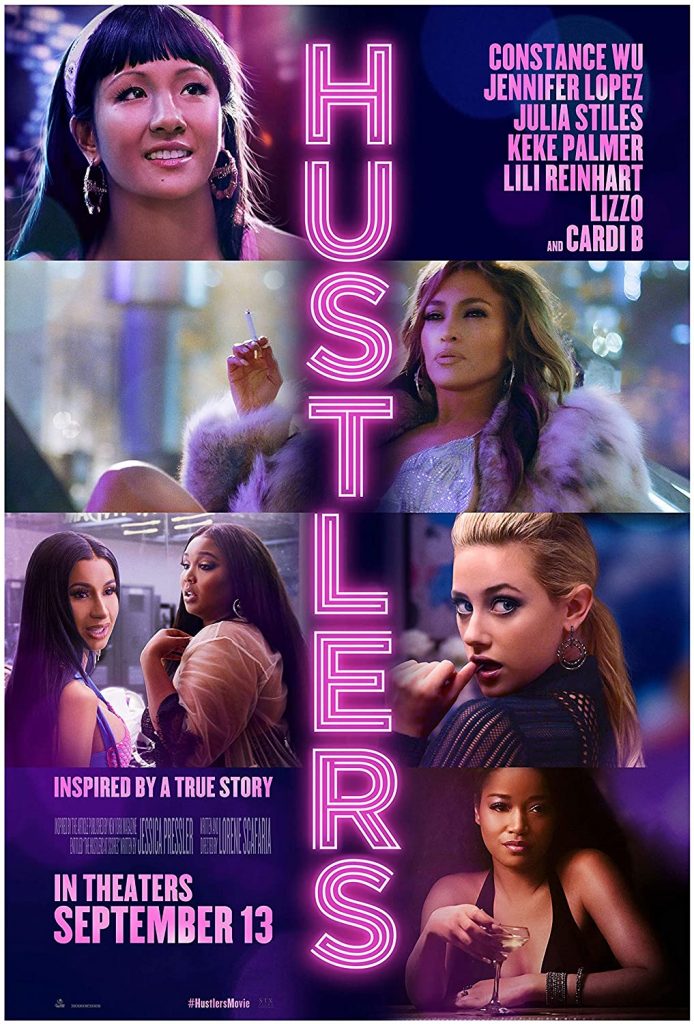
Hustlers was the robbed goddess of this year’s Oscars, and I’m on the Justice For JLo train, even if Elena isn’t so sure. It’s an instant camp classic, but it’s also sharply written and shot with an apt balance of lushness and intimacy. It’s one of the few films I’ve seen about sex workers that celebrates their bodies without leering, or worse, turning them into objects of disgust or pity. Hustlers turns objectified people into subjects in a way that tears down all of Western culture, and with such finesse that the real robbery might be Lorene Scafaria’s Best Director snub. Ultimately, however, it’s a good movie rather than a great one. There are way too many characters, and the back half of the movie drags as it relitigates crimes that we already watched in progress. Elena thought it was too sad of a movie to love, more about women tearing each other down than tearing down the patriarchy. I think the pop culture legacy of Hustlers will erase those sour notes from our collective memory, but I’ll be inviting sad friends to climb in my fur forever.
8. God’s Own Country (Elena: 3)
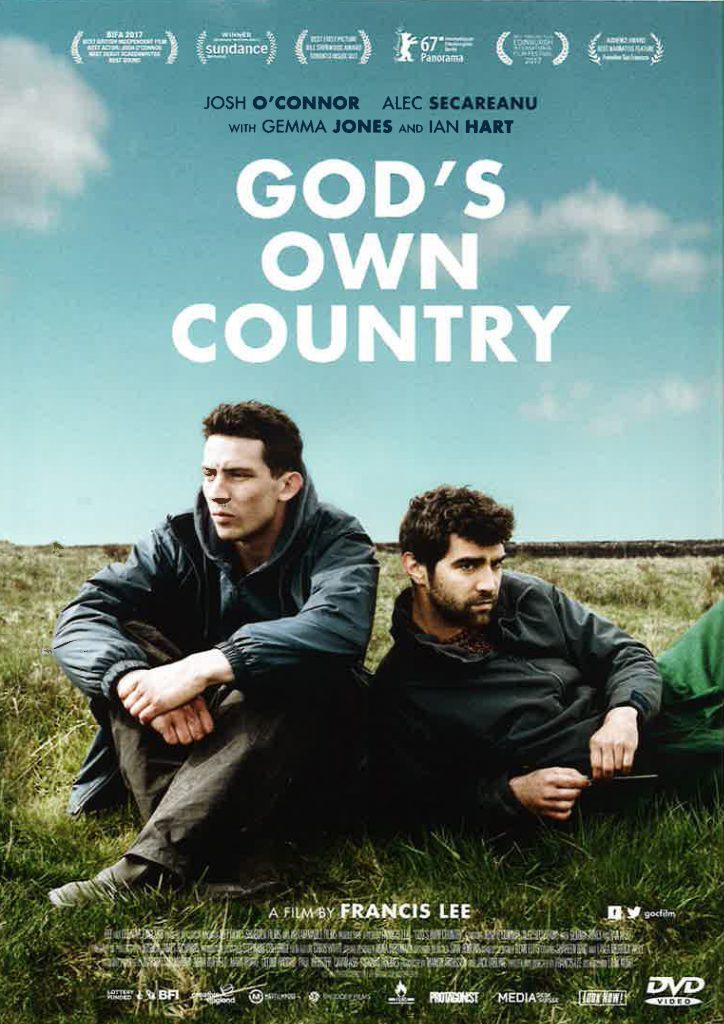
Elena loves this movie so much, she owns the DVD and chose it for one of our movie weeks because she was incensed that I hadn’t seen it yet. I’m not nearly as obsessed with it as she is, and the details of it have receded into my memory more than I would have expected. The story is standard enough: Romanian migrant worker comes to help closeted Northern English farmer with sheep; they have beautiful, guilty sex (possibly in a barn; I watched this in May, approximately fourteen thousand years ago) and undo their internalized homophobia together. Every plot point is expected, which blunts much of the impact. But the two leads are a delight to look at, and they embody a pair of distinct and layered personalities. So much of the credit for this movie goes to its director, Francis Lee, who can make the misty English countryside look grim and idyllic at the same time, and who clearly coached his leads to speak eloquently through their bodies as words fail their characters.
7. Where’d You Go, Bernadette? (Elena: 6)
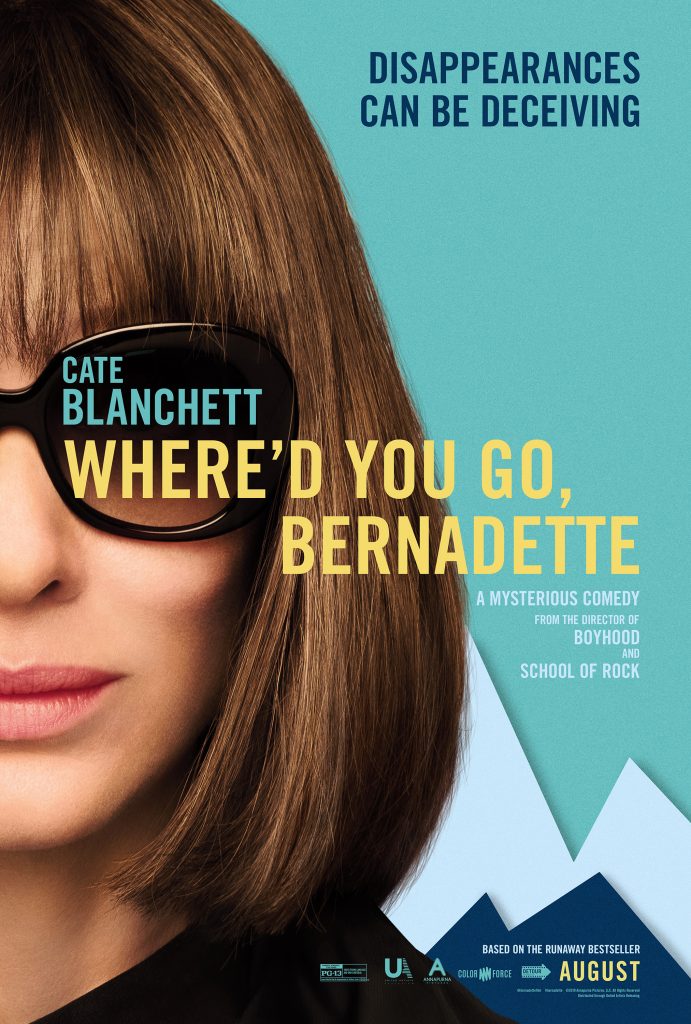
We both enjoyed this much more than we’d expected to. It was a hurriedly chosen backup selection after our first choice for movie of the week turned out to not be streaming anywhere. We should have had more faith in Richard Linklater and Cate Blanchett and less trust in the cynics who made it a flop upon release. Where’d You Go, Bernadette was mis-marketed to death. If I’d known it was less of a suburbanites-in-crisis family drama and more of a hyperreal escape yarn – Linklater’s attempt at a feminist homage to Wes Anderson – I would have been on this in the theater. It’s occasionally too whimsical for its own good, and there are moments when you can really tell it’s adapted from a novel. But my first move after watching this was to buy that novel, and my second move was to tell a bunch of people that it’s the kind of odd, satisfying film you need to dive into with an open mind and no spoilers.
6. Palm Springs (Elena: 9)
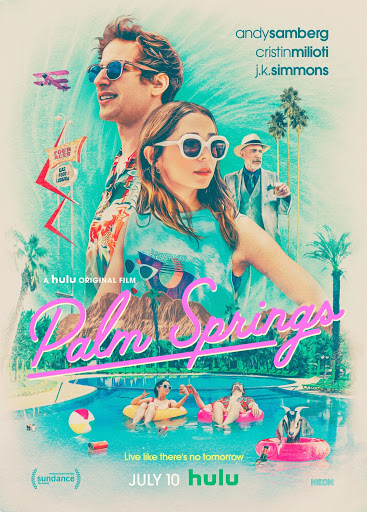
From here on out, it’s the movies I loved without reservation. Palm Springs is blatant Sarah bait. For one thing, it’s a time loop story, a trope I love so much that I themed my quarantine birthday party around it. (Yes, I celebrated my mumblety-first birthday by getting my friends and family to join me in a chat room and sync-watch as they pleased while I binged 18 hours of TV.) It stars Andy Samberg, whose work I always go in assuming I won’t find funny, only to be reminded that I find him hilarious in everything. Cristin Milioti, on the other hand, is an actress who I always forget exists, until I’m reminded that she has some of the sharpest comic timing in the universe. There’s J.K. Simmons, and Derek from Teen Wolf, and bisexual representation where you wouldn’t expect it. More importantly, there’s relevant and wrenching commentary on the cultural pressure to conform to a series of adult milestones, and how easy it is to give up when that life narrative isn’t possible or just doesn’t appeal to you. Palm Springs knows you’ve seen Groundhog Day and that one episode of Star Trek: The Next Generation, and it skips the overly familiar parts of the fantasy conceit it inhabits. It nudges lovingly at the fourth wall, reminding you that it’s giving you the exact movie you signed up for. Like its appealing pair of lead characters, it pretends to have no ambitions so it can keep turning on a dime and surprising you.
5. Carmen y Lola (Elena: 7)
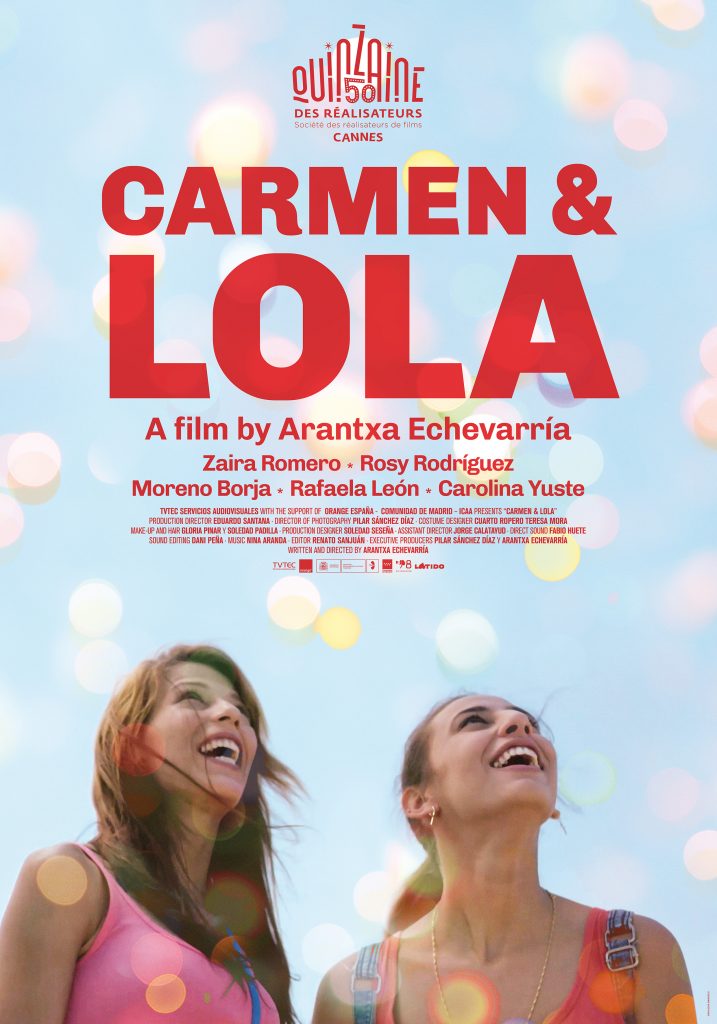
Carmen y Lola drew me into a world I hadn’t known existed, the insular Roma community in Madrid. Although the cultural particulars are very different, I felt a deep recognition as a Jewish viewer: the sense of almost passing, the tension between pride and frustration in the traditions that shape you. While the film is unsparing in its depiction of how Roma in Spain are marginalized, it’s not despairing, and it’s careful to show the joys of its characters’ lives even as they are more and more trapped by their families’ expectations. Have I not mentioned yet that this is a sweet, believable teen love story between two girls? The lead actress, Zaira Romero, is an instant star in her first film role, with a face like a young Barbra Streisand and a smolder like a tiny Antonio Banderas. Carmen tries to resist her allure but gives in, and so do we.
4. Lucky Grandma (Elena: 2)
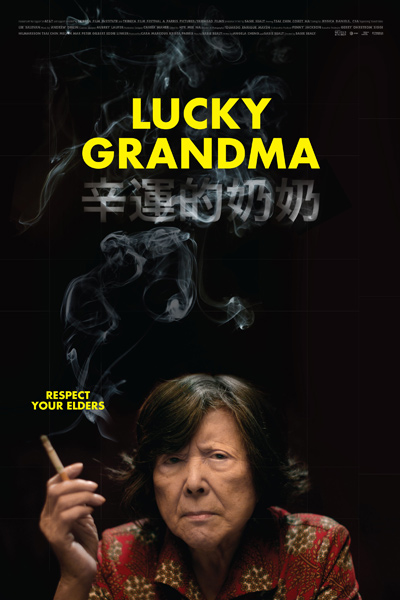
In a summer of sassy grandmas, Mrs. Wong is the sassiest. She’s a rare subject for a film, a small-statured old woman with a big personality who has lived in New York most of her life but never quite bothered to learn English. Despite the language barrier, Mrs. Wong is a true New Yorker, all brassy tenacity and rude-to-be-kindness. Tsai Chin, whose face you have seen countless times on screen, plays her with boundless enthusiasm and zero vanity, infusing her with a very specific set of attitudes and traumas but also an endearing every-grandma quality. It’s unfair to give away even a moment of this film’s twisty plot, because it’s a clockwork heist that wastes nothing and comes off as effortless. Suffice it to say that Lucky Grandma‘s greatest accomplishment is not just making a plausible action hero out of a little old lady, but convincing you that little old ladies make the best action heroes.
3. Pain and Glory (Elena: 8)
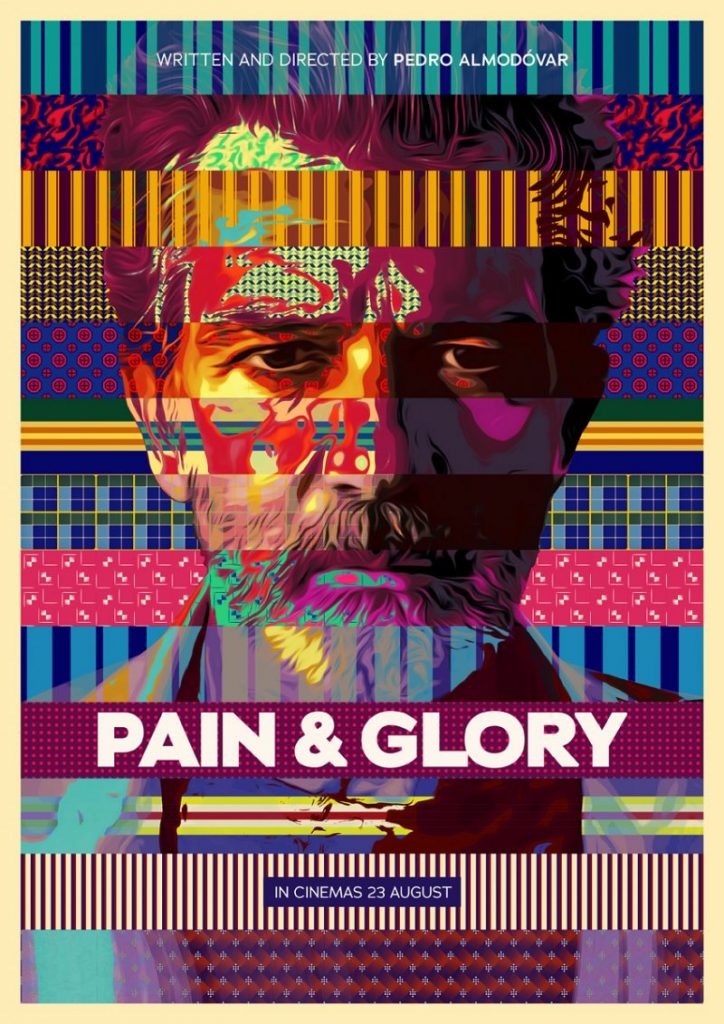
It might be some Almodóvar magic at work, but this movie makes a powerful case that old man Antonio Banderas is the sexiest Antonio Banderas. Like most Almodóvar films, it’s loosely autobiographical and emotionally wrenching. He’s one of my favorite auteurs, which is part of why Pain & Glory is way up here in the rankings and a little farther down for Elena. Some sloppy translations in the subtitles erase the subtleties of the script and occasionally even change the meaning; I spent much of our live chat telling Elena what they really said. But if you don’t speak Spanish, the language barrier doesn’t diminish this film’s meticulous beauty, with each shot framed just so, every choice of color and geometry not only intentional but part of the narrative. It’s not an easy film to watch – it’s unrelenting in its depiction of chronic pain, and it’s not the kind of gay movie that ends with a happy couple holding hands at sunset – but it’s a masterpiece, impossible to look away from for even a moment.
2. Portrait of a Lady on Fire (Elena: 5)
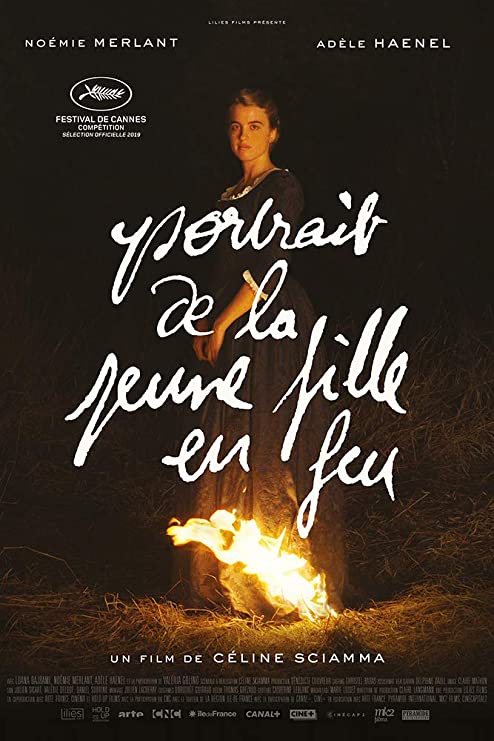
As much as I’m witheringly critical of almost everything I encounter, I much prefer to find that a film lives up to the hype. Portrait of a Lady on Fire received universal acclaim, so I dragged my feet for a couple of months after Elena first suggested we watch it, assuming I would be that one person who dared to just not be that into it. I am pleased to announce that I am not that one person. It has the sheen of idyllic European period drama, and it moves at a deliberately languid seaside pace. But it mesmerized me on a weekend when I was dealing with major life distractions, which is the highest seal of approval that my ADHD brain can bestow. The romance at the center of the film is as sweet and sexy as advertised, but this is a queer film that’s not overly busy being a Queer Film, and all the better for it. There’s a point where I realized there are literally no men in this film except at the very beginning and very end, but the women-only world it depicts isn’t a paradise or even a refuge. Instead, it’s a sharp reminder that women have always had inner lives and unique, human experiences, even as history has seldom recorded them. I watched this the day after I saw the filmed version of Hamilton, and their ending message is much the same: you don’t control “who lives, who dies, who tells your story.”
1. And Then We Danced (Elena: 1)
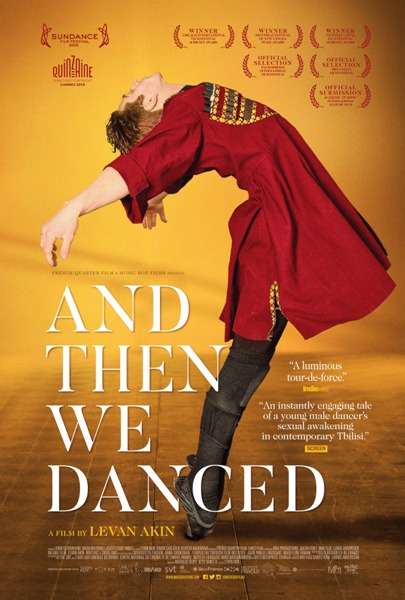
I didn’t have trouble choosing my favorite movie of the pandemic film fest, because And Then We Danced is a perfect combination of a topic I care about, tropes and themes I’m weak for, and filmmaking I admire. Elena, with different priorities than mine, put this at the top of her own list, which reinforces that this is an extraordinary film no matter who you are or what you like. Like several of our high-ranked choices, it’s a window into a universe I hadn’t had the privilege of visiting before: the city of Tbilisi and its subculture of traditional Georgian dance. The two male leads of the film fall dangerously, deliciously in love, in a part of the world where that cannot end well. That’s the plot, and it doesn’t need more story than that, because it’s so rich with gorgeous and explosive dancing, sensual images of food, and intimate close-ups of lead actor Levan Gelbakhiani’s Bambi eyes and quivery lips. As brutal as it is in its depiction of Georgia’s entrenched culture of toxic masculinity, it’s ultimately a hopeful film, discovering beneath the patriarchal status quo a resistant and worldly younger generation that might be approaching its boiling point. All that, and there is literally only one bed. And Then We Danced isn’t just my favorite movie of my long indoor spring and summer; it’s probably one of my favorite movies ever.
Will this post have a sequel? I’m torn between hoping that life will be normal-ish soon enough to say no, and hoping Elena and I keep up our movie-a-week habit. Maybe we’ll feel safe enough to see some of our next 19 films in a theater. Regardless, I’m willing to count this experiment as one of the better things to come out of the pandemic.

Hallelujah! Here you are again. Great list; thank you for this. Pandemic shifted me, as others on this planet; well, some others. Congratulations on getting marriage-engaged! Generally, I buy movies then hand them back to my recycle folks so they can sell it again. And Then We Danced, Lucky Grandma and Pain & Glory–all new to me, so thanks. I do not stream, tweet, face, or gram. You write as well about movies as you do with figure skating. Resolutions to pandemic? It will be awhile but another four years; I do not know if I can go through that again. Alejandro Patiño is superb everywhere. People ask me why I will watch gay movies when I am not and it is so simple–it is a movie. Genre does not matter. Good and great movies do.